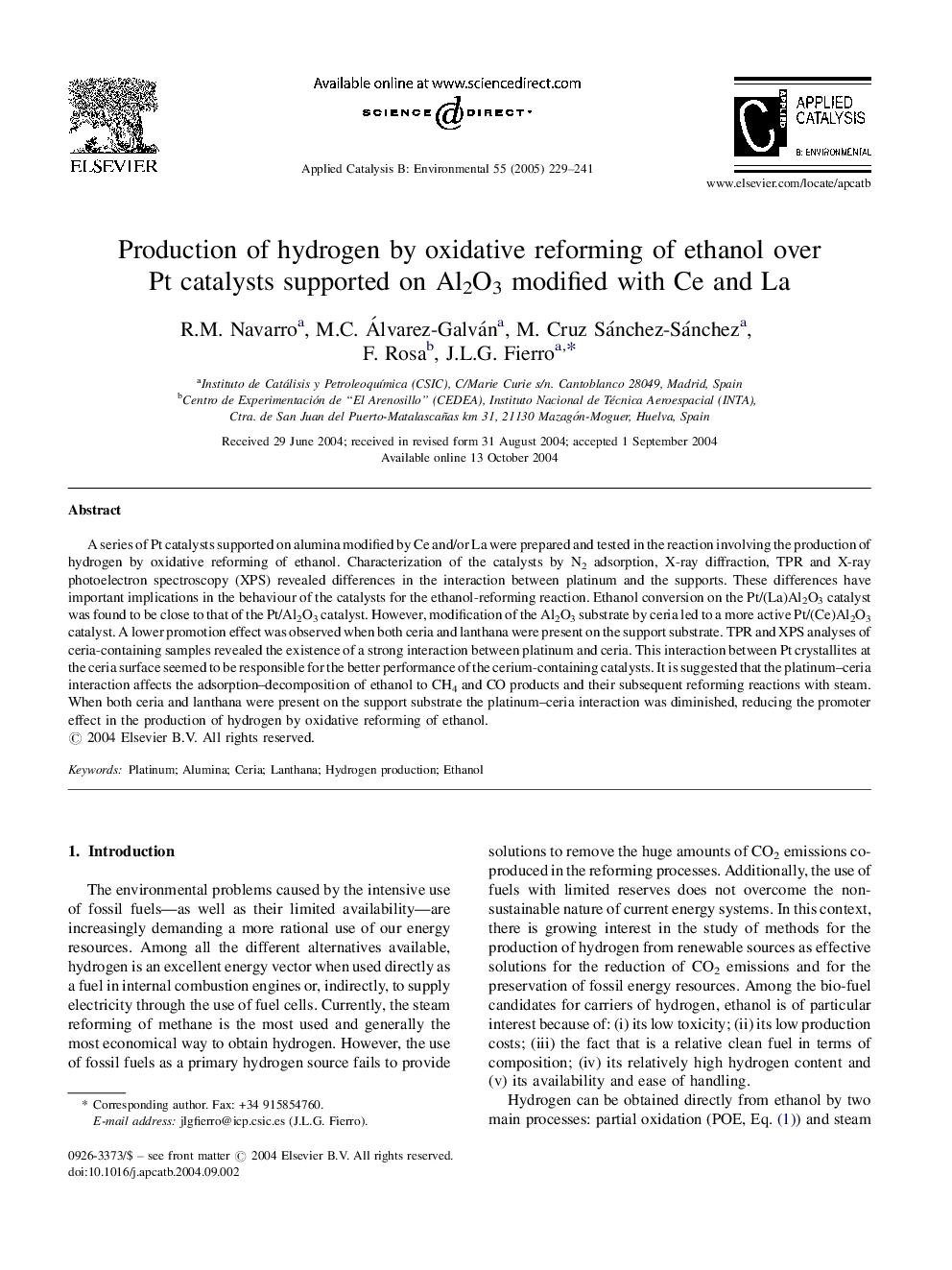| Article ID | Journal | Published Year | Pages | File Type |
|---|---|---|---|---|
| 10241285 | Applied Catalysis B: Environmental | 2005 | 13 Pages |
Abstract
A series of Pt catalysts supported on alumina modified by Ce and/or La were prepared and tested in the reaction involving the production of hydrogen by oxidative reforming of ethanol. Characterization of the catalysts by N2 adsorption, X-ray diffraction, TPR and X-ray photoelectron spectroscopy (XPS) revealed differences in the interaction between platinum and the supports. These differences have important implications in the behaviour of the catalysts for the ethanol-reforming reaction. Ethanol conversion on the Pt/(La)Al2O3 catalyst was found to be close to that of the Pt/Al2O3 catalyst. However, modification of the Al2O3 substrate by ceria led to a more active Pt/(Ce)Al2O3 catalyst. A lower promotion effect was observed when both ceria and lanthana were present on the support substrate. TPR and XPS analyses of ceria-containing samples revealed the existence of a strong interaction between platinum and ceria. This interaction between Pt crystallites at the ceria surface seemed to be responsible for the better performance of the cerium-containing catalysts. It is suggested that the platinum-ceria interaction affects the adsorption-decomposition of ethanol to CH4 and CO products and their subsequent reforming reactions with steam. When both ceria and lanthana were present on the support substrate the platinum-ceria interaction was diminished, reducing the promoter effect in the production of hydrogen by oxidative reforming of ethanol.
Related Topics
Physical Sciences and Engineering
Chemical Engineering
Catalysis
Authors
R.M. Navarro, M.C. Álvarez-Galván, M. Cruz Sánchez-Sánchez, F. Rosa, J.L.G. Fierro,
